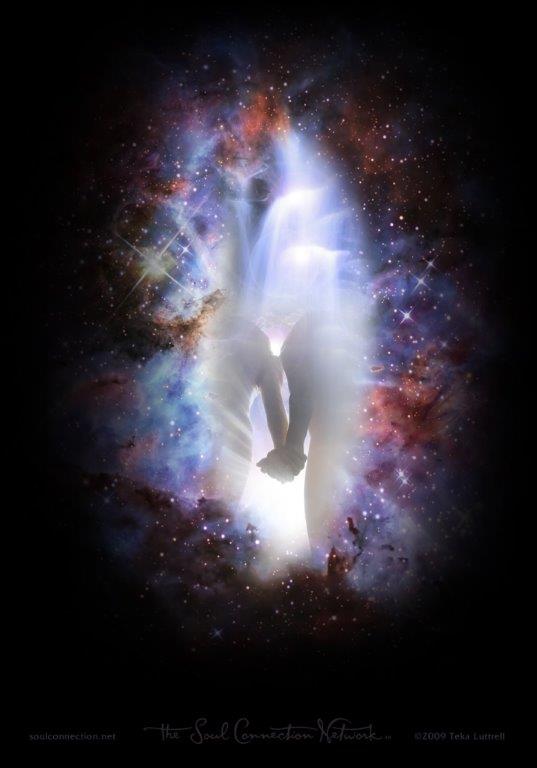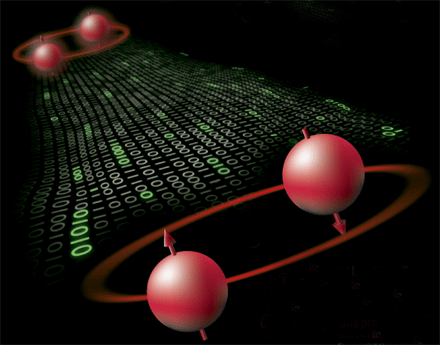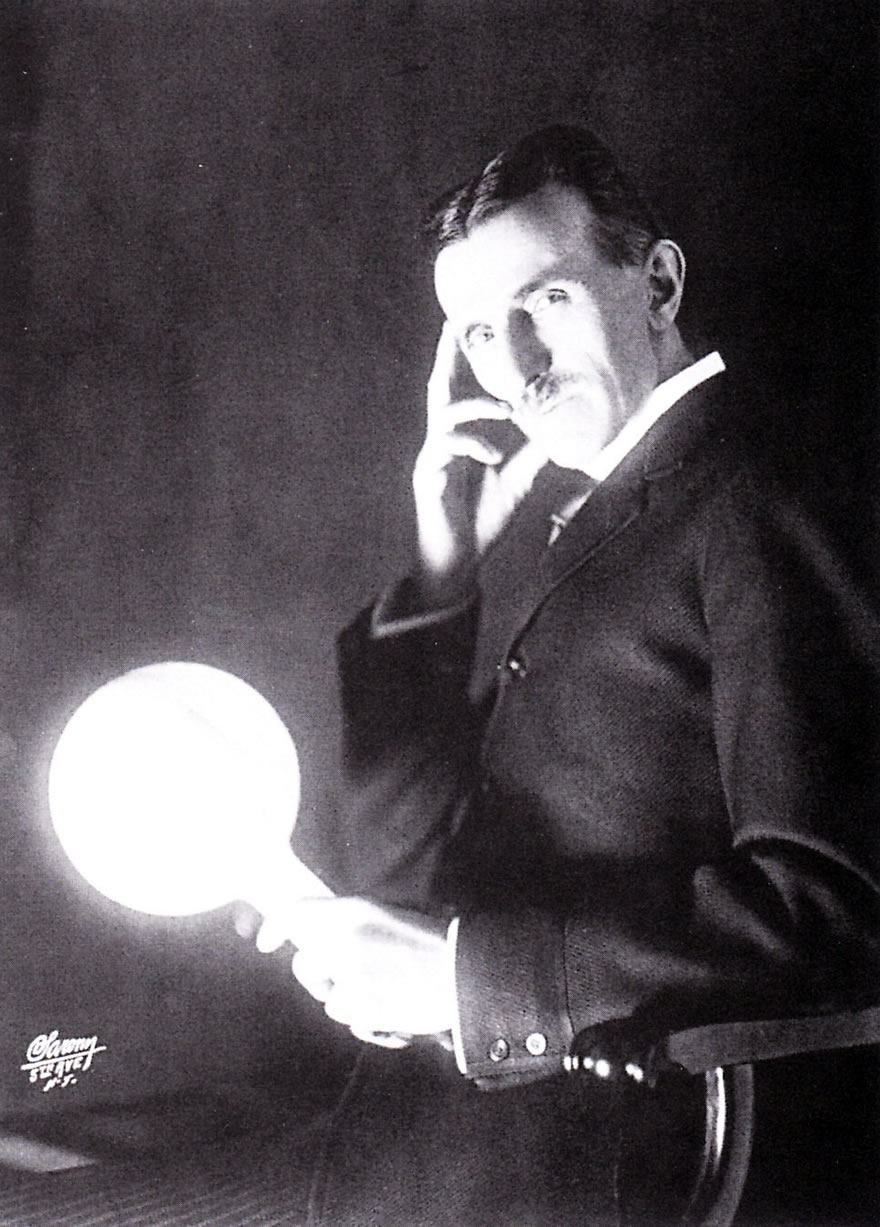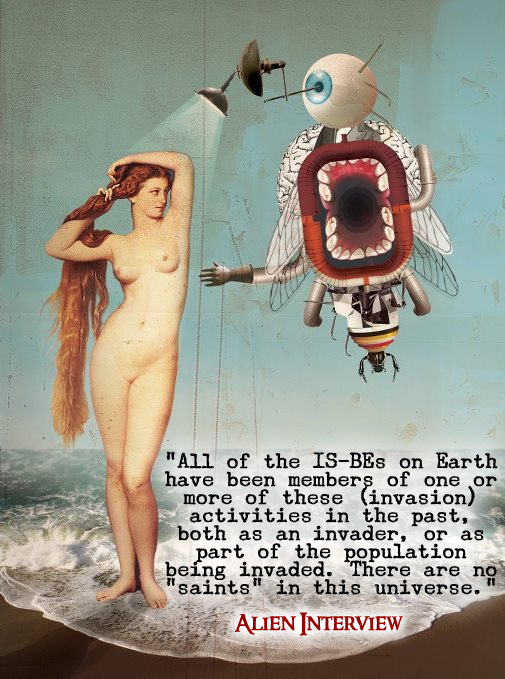Republished by Blog Post Promoter
Category Archives: UNIVERSES
Universes are comprised of thoughts, ideas, dreams, illusions, delusions, which may also include stars, space, time, energy and objects. Or not. These are the universes of the author Lawrence R. Spencer, and others for whom he has an affinity.
ENTANGELMENTS OF THE TWIN FLAME POLARITY SELF
Republished by Blog Post Promoter
“Twin Flame / Polarity Self”: A Manifestation of “Entanglement” in Quantum Physics — by Lawrence R. Spencer
— by Lawrence R. Spencer
DEFINITION: “polarity” = noun: having an indicated pole (as the distinction between positive and negative electric charges)
A “Twin Flame Polarity Self” is the description of a relationship between two Immortal Spiritual Beings (Is-Bes) who each manifest the opposite, and complimentary, “polarity” (positive / negative energy) of the same spiritual “self”. The ancient principle of Ying / Yang is a common interpretation of this phenomenon from the prehistory on Earth.
Theoretically, one Is-Be possesses only ONE HALF of the total energetic ability of the combined Is-Be. When the “halves” of the “whole” Is-Be are separated they do not have the same Power and Ability they have when they are together!
The New Age “Law of Attraction” is based primarily on the observation and experience of this phenomenon. In human experience it is most often an interaction between people, especially lovers or life partners. It is common for people to search for their “true love” or “soul mate”, with a primordial, insatiable yearning that is fulfilled by only a few in one lifetime, if ever. However, when one finds and is “reunited” with their “Twin Flame” the resulting relationship is nothing less than profoundly fulfilling, gratifying and transcendent for each person!
The entire physical universe seems to be constructed of “Thought Energy”. By experiment and common observation, the “energy” in our physical universe is ALWAYS composed of a “polarity”, i.e. positive + negative (male + female) energy.
Nikola Tesla observed that “If you want to find the secrets of the universe, think in terms of energy, frequency and vibration.” And, “The day science begins to study non-physical phenomena, it will make more progress in one decade than in all the previous centuries of its existence.” . He was the first person to observe that an electric motor cannot run without BOTH positive and negative electrons. It will not generate power. Nickola Tesla discovered that the most powerful electric generators are created using “alternating current”. This is a flow of electricity that COMBINES POSITIVE and NEGATIVE electrons through a simultaneous and alternating INTERACTION which flows along the SAME PATH at the SAME TIME. His invention of the Alternating Current Generator changed the entire history of Earth by bringing electricity to the entire planet!
This “polarity” phenomenon is not only a personal, subjective, spiritual or romantic reality, but a scientific fact. In recent years proof of this reality has been proven by experiment by quantum physicists. It is called “Entanglement”.
The following article explains “Entanglement” in Quantum Physics:
 “Identical twins, it’s said, can sometimes sense when one of the pair is in danger, even if they’re oceans apart. Tales of telepathy abound. Scientists cast a skeptical eye over such claims, largely because it isn’t clear how these weird connections could possibly work. Yet they’ve had to come to terms with something that’s no less strange in the world of physics: an instantaneous link between particles that remains strong, secure, and undiluted no matter how far apart the particles may be – even if they’re on opposite sides of the universe. It’s a link that Einstein went to his grave denying, yet its existence is now beyond dispute. This quantum equivalent of telepathy is demonstrated daily in laboratories around the world. It holds the key to future hyperspeed computing and underpins the science of teleportation. Its name is “entanglement”.
“Identical twins, it’s said, can sometimes sense when one of the pair is in danger, even if they’re oceans apart. Tales of telepathy abound. Scientists cast a skeptical eye over such claims, largely because it isn’t clear how these weird connections could possibly work. Yet they’ve had to come to terms with something that’s no less strange in the world of physics: an instantaneous link between particles that remains strong, secure, and undiluted no matter how far apart the particles may be – even if they’re on opposite sides of the universe. It’s a link that Einstein went to his grave denying, yet its existence is now beyond dispute. This quantum equivalent of telepathy is demonstrated daily in laboratories around the world. It holds the key to future hyperspeed computing and underpins the science of teleportation. Its name is “entanglement”.
The concept, but not the name of entanglement, was first put under the scientific spotlight on May 15, 1935, when a paper by Einstein and two younger associates, Nathen Rosen and Boris Podolosky, appeared in the journal Physical Review. Its title – “Can a Quantum-Mechanical Description of Physical Reality Be Considered Complete?” – leaves no doubt that the paper was a challenged to Niels Bohr and his vision of the subatomic world. On June 7, Erwin Schrödinger, himself no lover of quantum weirdness, wrote to Einstein, congratulating him on the paper and using in his letter the word entanglement – or, rather, its German equivalent verschränkung – for the first time. This new term soon found its way into print in an article – sent to the Cambridge Philosophical Society on August 14 that was published a couple of months later. In it he wrote:
When two systems … enter into temporary physical interaction … and when after a time of mutual influence the systems separate again, then they can no longer be described in the same way as before, viz. by endowing each of them with a representative of its own. I would not call that one but rather the characteristic trait of quantum mechanics, the one that enforces its entire departure from classical lines of thought. By the interaction the two representatives [the quantum states] have become entangled.
The characteristic trait of quantum mechanics … the one that enforces its entire departure from classical lines of thought – here was an early sign of the importance attached to this remarkable effect. Entanglement lay at the very heart of quantum reality – its most startling and defining feature. And Einstein would have none of it. Yet, the fact of the existence of the “entanglement” phenomenon in this universe have now been conclusively proven by numerous experiments.
Practical applications
The phenomenon of entanglement has already begun to be exploited for practical purposes. In the late 1980s, theoreticians started to see entanglement not just as a puzzle and a way to penetrate more deeply into the mysteries of the quantum world, but also as a resource. Entanglement could be exploited to yield new forms of communication and computing. It was a vital missing link between quantum mechanics and another field of explosive growth: information theory. The proof of nonlocality and the quickly evolving ability to work with entangled particles in the laboratory were important factors in the birth of a new science. Out of the union of quantum mechanics and information theory sprang quantum information science – the fast-developing field whose most important fields of development are quantum cryptography, quantum teleportation, and quantum computers.”
READ THE ENTIRE ARTICLE: http://www.daviddarling.info/encyclopedia/Q/quantum_entanglement.html
HUMAN BEING
Republished by Blog Post Promoter
15 Best Bonsai Trees
Republished by Blog Post Promoter
Bonsai literally means “plant in a tray” in Japanese and it seams that the tree and the pot form an unique harmonious unit where the shape, texture and colour of one, compliments the other. To obtain a harmonious bonsai can take dozens of years of pruning, wiring, leaf trimming, clamping and grafting. Some of the specimens featured here are faithful to the Japanese aesthetics and philosophy, while some growers made a real effort to get out of the box…arr, tray.
1. World’s Smallest Bonsai Tree
 What’s smaller than a miniature tree? A miniature miniature tree. This masterpiece measures 22mm and it was obtained from a Malaysian local species called “water jasmine” – the only species that can apparently be made so small. Creator Kuah Tee Teong claims that it may be the world’s smallest bonsai, since the standard measure of a miniature bonsai is 10cm. Kuah doesn’t strive for popularity and didn’t register his creation in the Worlds Book of records, neither is he planning to sell his tiny trees. His philosophy: ‘’If I sell, then I’ll have nothing to show.” He also prunes animal shaped trees that look like dogs, snails or octopuses.
What’s smaller than a miniature tree? A miniature miniature tree. This masterpiece measures 22mm and it was obtained from a Malaysian local species called “water jasmine” – the only species that can apparently be made so small. Creator Kuah Tee Teong claims that it may be the world’s smallest bonsai, since the standard measure of a miniature bonsai is 10cm. Kuah doesn’t strive for popularity and didn’t register his creation in the Worlds Book of records, neither is he planning to sell his tiny trees. His philosophy: ‘’If I sell, then I’ll have nothing to show.” He also prunes animal shaped trees that look like dogs, snails or octopuses.
2. Music from a Bonsai
Diego Stocco is not a bonsai grower, hasn’t won any bonsai competition award, but he is, in his own unique way, a bonsai lover and tamer. He bought a bonsai tree and made it sing, proving that you actually can teach an old bonsai new tricks. Using a Røde NT6 microphone, some tiny transducers and a customized stethoscope, Stocco recorded an experimental piece played exclusively by the bonsai’s small leaves and branches. He also used a piano hammer, a paint brush and different bows to obtain different sounds from the tree. Don’t be scandalised if it seams from this video that he is somehow torturing the poor little tree. No bonsai was damaged during the experiment and, as you know, art demands sacrifices.
3. Rare Ganoderma Bonsai
This is an extremely rare ganoderma lucidum cultivated bonsai, with an impressive diameter of 90cm. The successive layers and crown shaped cap make it unique in the world.
Known as “”fairy herb”, Gandorema lucidum has been used for medicinal purposes in traditional Chinese medicine for more than 2000 years. It is one of the oldest mushrooms to have been used in disease treatments and , due to it’s presumed health benefits and apparent absence of side effects, it is known as one of the most powerful herbal substance in East Asia. In Chinese culture, it is also considered a good luck, beauty and longevity charm. The plants health benefits and spectacular shapes and colours saved it an important place on the bonsai market as well.
4. Awarded Penjing Landscape
“Penjing” is the Chinese extension of bonsai art and it can be literally translated “landscape in a pot”’. The chines art focuses more on creating a convincing miniature landscape than shaping the perfect miniature tree as Japanese bonsai growers strive to obtain. Nonetheless, the value of an awarded penjing is given by the way it looks with naked branches, when not attired in fabled leaves and flowers. The assembly in the image is called 大風驚濤, which literally means “harsh wind severe waves” and it was awarded at the Guangzhou Penjing Exhibition in China, the biggest lingnan (southern style) penjing exhibition since the founding of the country.
5. The Oldest Bonsai Trees
The oldest known bonsai trees still living can be found in a private restaurant garden in Tokyo, Japan. The 400 to 800 years old trees in Happo-en Garden ar an attraction for any bonsai lover visiting Tokyo. Every tree is grown in era-specific pots that are often as valuable as the trees themselves.
The practice of potted trees gose way back to the Egyptian Era, 4000 B.C. Inhareted images depict miniature trees cultivated in rock containers. Pharaoh Ramesses III is known to have donated several olive trees and other miniature plants to various temples. In the Indian Pre-Common Era several plant species were grown in a “”bonsai manner” for medicine and nutrition purposes.
6. World’s Biggest Bonsai Tree
This 600 year old Japanese bonsai is presumably the biggest bonsai tree in the world, according to the staff of Akao Herb & Rose Garden in Atami, Japan. Sure, the title is somehow paradoxical since the main quality of bonsai trees is being small. But, after all, if bonsai means “tree in a pot” it doesn’t metter how big the pot is, especially if it contains an impressing 5 meter tall and 10 meter wide ancient red pine bonsai like this one.
7. Walter Pall’s Rocky Mountain Juniper
Walter Pall is a kind of bonsai rock-star among the culture’s enthusiasts. He has received several dozens national and international awards for his beautiful, dramatic bonsai. He has won the most prestigious Crespi Cup Award of Italy for his well known Rocky Mountain Juniper, and has come in among the top six, every time he has entered. He has also won second and third and other places places in the Gingko Cup Awards of the Belgium bonsai competition held every two years. The most controversial information about Walter pall is that, although world renown, he considers himself an amateur working professionally. That’s because he styles trees for his own amusement and not for commercial purposes. In time he managed to put together one of the most comprehensive bonsai collections around.
8. Walter Pall’s Acer Platanus
Another famous piece from Walter pall’s collection is this Sycamore Maple that won the Bonsai Today / Art of Bonsai Photo Contest. Pall was one of the first Europeans to work with indigenous species, which he collects in his beloved Alpine mountain.s He now owns a collection of about 1000 quality trees in varying stages of development and keeps a store reserve of about 1000 handmade pots to compliment the bonsai. Besides his famous conifers he is also well known for his beautiful deciduous trees. Walter’s bonsai usually are strong, powerful trees which he frequently forms in natural shapes. The longer he has been involved with tree development, the more he has moved away from traditional bonsai styling to his own concepts of design.
9. Walter Pall’s Crab Apple Tree
This is my personal favourite from Pall’s collection: an incredibly sweet 65 cm high apple tree. I have no idea how anyone that sees it live could resist not to taste those tiny apples, but I guess Mr. Pall keeps it in a safe place, away from leering guests. Fruit trees training is an ascending trend among bonsai growers. The fascinating part about it is that the fruits are indeed edible, especially those belonging to the citrus category. Common fruits that can be obtained in small size include: cherries, apples, lime, lemons, tangerine and figs. The bonsai fruit tree success strongly depends on meteorological and topographical factors, like humidity, temperature and soil.
10. Awarded Chinese Juniper “Itoi-gawa”
The Chines Juniper is a very loved and popular tree among bonsai professionals and amateurs alike. Due to the woods malleability, it can be stylised into beautiful and interesting shapes. Like this one belonging to Enrico Savini from Italy, that has won several awards, including Ben Oki International Design Award in 2003 and Bonsai Clubs International People’s Choise Award 2008. Savini says he fell in love with bonsai art at age ten and his first tree, a Prunus mume that only survived a few months, was a gift from his grandma. “ I couldn’t forgive myself for that failure, so I took it as a personal challenge, my entire career has been a continuous personal challenge.”
11. Dan Robinson, The Picasso of Bonsai
This perfect Mountain hemlock expresses Dan Robinson’s virtuosity as a bonsai artist and his respect for the nature’s own ways. Known as a pioneer in bonsai art, or as the Picasso of bonsai, he practices an preaches techniques inspired by the ancient Japanese ways. This is one of the many amazing captures pictured in the book Gnarly Branches, Ancient Trees: The Life and Works of Dan Robinson – Bonsai Pioneer made ]n collaboration with photographer Will Hiltz.
12. Awarded Junipero San Jose
This work of art belongs to Nacho Marin, a Venezuelan Fine Arts graduate who is fascinated by the infinite possibilities of taming and manipulating trees. In his quest to recreate a natural environment, he also takes great care so that the shape and mood of the final product reflects his artistic vision. No wonder that his Junipero San Jose won the flattering title of ”Most artistically innovative entry of all entries from all categories” at The Art of Bonsai Contest 2008.
13. Adenium Flower Bonsai
Not as popular as junipers, but unanimously loved for their delicacy and frailness, flower bonsais can come up in extraordinary forms. Mr. Jai Krishna Agarwal from india has about 100 specimens in his collections and he especially loves adenium flowers. Why? Because their trunks often remind the shapes of the human body . The effect is surrealistic to say the least, this beautiful example shown here brings to mind some elaborate fauvist sculpture.
14. Semi-cascade Juniper Bonsai
A Juniper bonsai collected, designed and developed by Harry Hirao and displayed at the National Bonsai and Penjing Mueseum at The United States National Arboretum. This very old, semi-cascade style bonsai was probably collected in the White Mountains of California. The shari (deadwood on the trunk) is very prominent on this bonsai, leaving only one stripe where the tree is connected between its leaves and the roots.
The esthetics behind this type of contorted and twisted trunk is called literati and it was influenced by the political and academic conditions in the Tang Dynasty period, when penjing was once widely practiced by the elites. Literati is a contemplative, lyrical style displaying tension (in the trunk) and release (in the cascading branches) like the universal law of Yin and Yang.
15. Beautiful Azalea Tree
An old Azalea, probably a Satsuki type, from the Collection of the National Bonsai and Penjing Mueseum at The United States National Arboretum. Azaleas bloom in spring, their flowers often lasting several weeks. In Chinese culture, the azalea is known as “thinking of home bush” (xiangsi shu) and is immortalized in old poetry and contemporary stories.
INVADERS
Republished by Blog Post Promoter
“Throughout the entire history of this physical universe, vast areas of space have been taken over and colonized by *IS-BE (*IS-BE = Immortal Spiritual BEing) societies who invade and take over new areas of space in this fashion. In the past, these invasions have always shared common elements:
1) the overwhelming use of force of arms, usually with nuclear or electronic weapons.
2) mind control of the IS-BEs in the invaded area through the use of electroshock, drugs, hypnosis, erasure of memory and the implantation of false memory or false information intended to subjugate and enslave the local IS-BE population.
3) takeover of natural resources by the invading IS-BEs.
4) political, economic and social slavery of the local population.
These activities continue in present time. All of the IS-BEs on Earth have been members of one or more of these activities in the past, both as an invader, or as part of the population being invaded. There are no “saints” in this universe. Very few have avoided or been exempted from warfare between IS-BEs. IS-BEs on Earth are still the victims of this activity at this very moment.”
___________________
Excerpt from Top Secret military transcripts published in the book Alien Interview




















